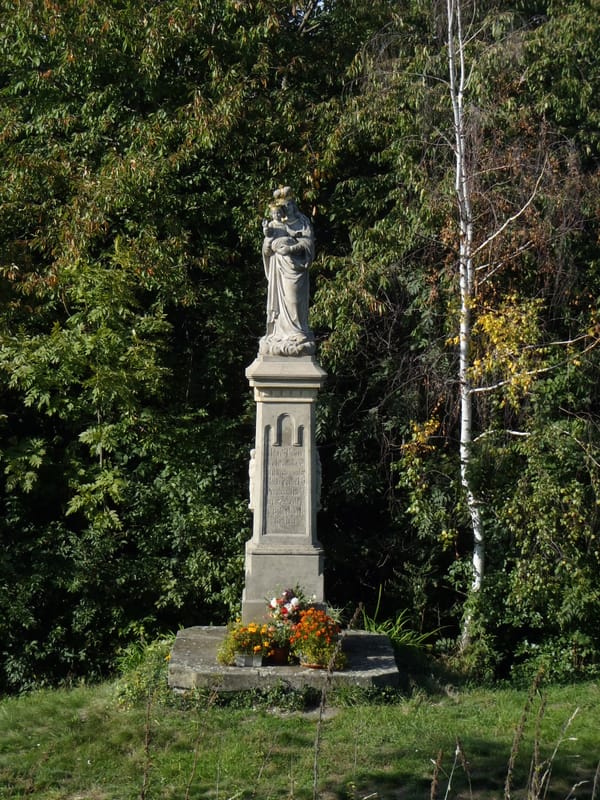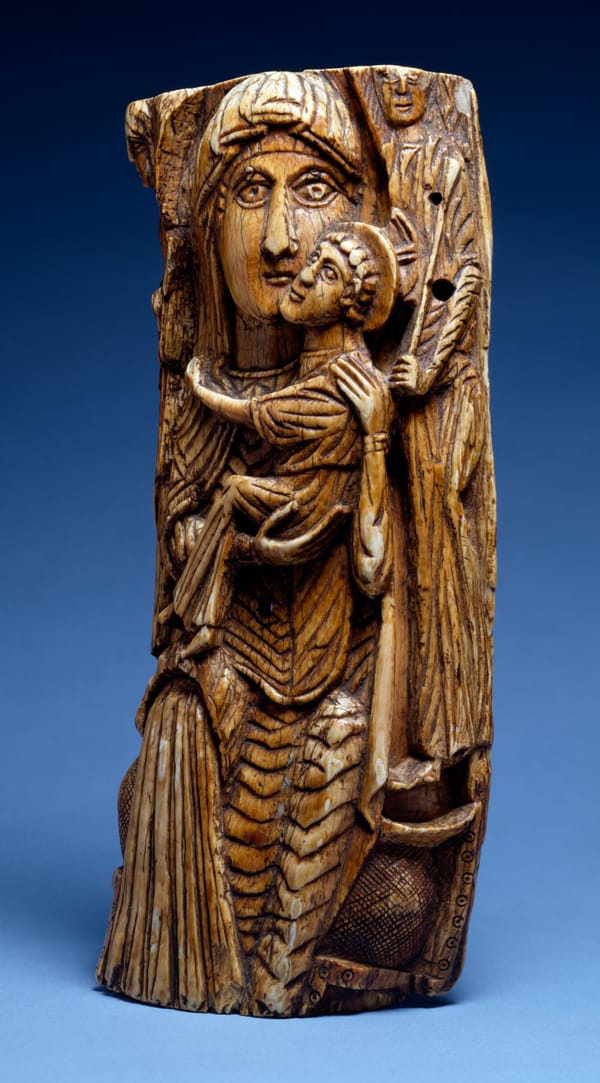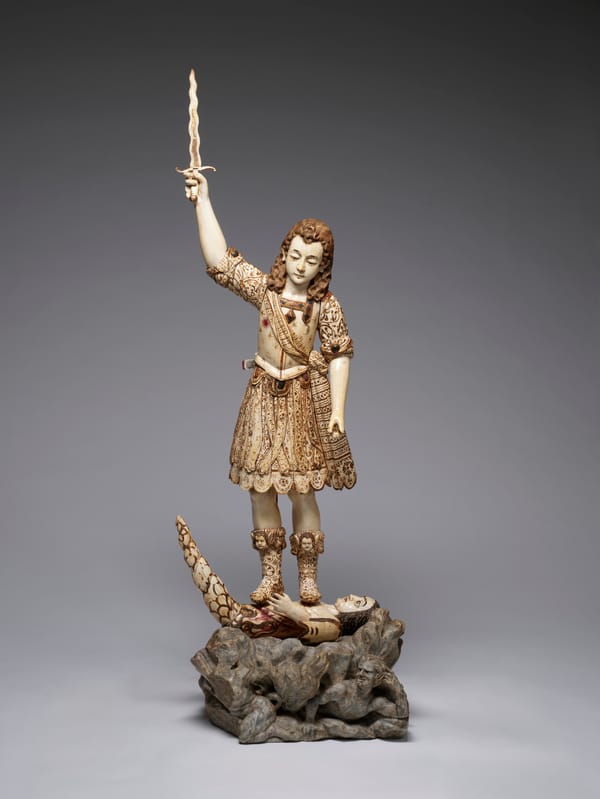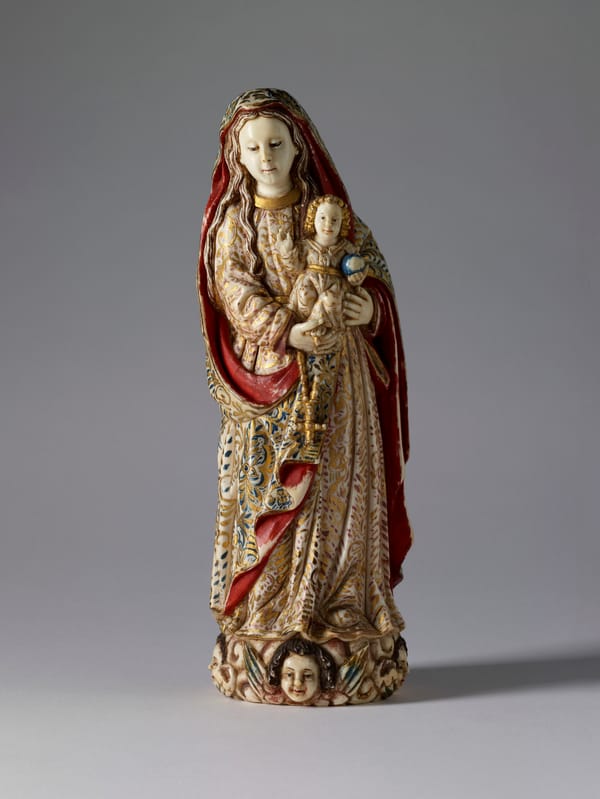About the Image:
The sculpture depicted in the image is a representation of Saint James, known as one of the Twelve Apostles in Christian tradition. Saint James is often portrayed as a pilgrim, which is evident from the attire featured here, notably the scallop shells on his hat and the scrip (a bag traditionally carried by pilgrims). The scallop shell is particularly associated with Saint James and serves as a symbol of pilgrimage, especially the famous Camino de Santiago, which leads to his shrine in Spain.
The figure of Saint James is rendered in a style that suggests it may be from the late medieval period or possibly early Renaissance, due to its somewhat rigid posture and the detailed carving of the garments and facial features. The work is reminiscent of the statuary from the Gothic period, which often featured elongated forms and elaborate detail, yet it also has a solidity that hints at the emerging Renaissance sensibilities. The base of the sculpture is inscribed with "S JACQUES," likely a reference to the French or Latin name for Saint James.
Considering the style and iconography, it could be speculated that this sculpture dates from somewhere between the late 15th to the early 16th century. The exact year would be difficult to determine without more context or provenance, but this timeframe fits the transitional period between Gothic and Renaissance art in Europe, particularly within the regions that would have been along the pilgrimage routes dedicated to Saint James.
Image Attribution 4.0 International (CC BY 4.0). Source: Wellcome Collection.








